Managing Toddler Tantrums and Unwanted Behavior
Welcome to the tactical segment of the behavior series! We encourage you to use this article as a foundation for creating your own personal disciplinary style and approach.
For context, before reading, please check out the articles leading up to this one:
- The discipline series Introduction
- Our age-specific articles for 1-, 2- and 3-year-olds
If you’re all caught up, congrats! You’re ready for our tactical “how-to” rundown of what you can do when everything falls to pieces:

You’re the proud parent of a young toddler — yay! That means you have an incredible, clever, adorable child… whose job it is to constantly test boundaries and rules as he asserts his independence and establishes himself as a person. Separate from you.
This can be unbelievably irritating, but pushing limits is actually healthy, normal toddler behavior, for one-, two-, and three-year-olds.
As parents, we know what to do when our kids are being angels — hug them, kiss them, praise them, relish the moment, etc. But what about when they drive you to drink?
Take a deep sigh of relief because you are not alone. This is the classic time frame when toddlers begin acting out. Their little brains are learning so much so fast, and they’re trying to figure out how to be more independent, while also following the guidelines we set for them.
In fact, children’s brains grow and develop more in the first few years than any other time in life — but toddlers are still just learning the ropes when it comes to emotional control and self-control. They struggle to contain their emotions, express themselves clearly, think of others, and restrain their impulses. Their brains are just not quite ready for all these things yet.
And it’s not their fault, it’s just where they’re at.

We’ve borrowed heavily from our friends at the Love and Logic Institute and a host of other wonderful parenting books on discipline/behavior to put together a set of disciplinary techniques for common incidents and misbehaviors among toddlers.
We also want you to understand the importance of being firm with your kids without being overly authoritarian. This may seem like an oxymoron, but while it’s important to set hard limits and hold high expectations for our kids, we also want to offer them freedom and the opportunities to make their own choices within the parameters we set (if that doesn’t make sense right now… it will).
Most importantly, you should adapt your discipline approach to accommodate your child’s unique development. (Translation: Every child is different. Do what works best for yours.)
If you’ve been with us throughout this entire series, this is probably the moment you’ve all been waiting for: what the heck do I do when my toddler [fill in the blank]… bites, hits, runs off, throws food, whines, hits her sister with a Twilight Turtle, has a tantrum at the grocery store, etc.?
It happens: your child throws a tantrum (for example). What do you do?

Boiled down, here is the protocol at its most rudimentary level (click to skip ahead):
1. Wait; take a deep breath; don’t talk too much; see if a natural consequence remedies the problem (example: you threw your ball off the deck, now it’s gone — oh well!)
2. Connect with your child. Empathize.
3. Redirect him…
4. and/or, give a consequence, depending on the situation.
5. Move on and keep looking forward.
Of course, the hope here is that you won’t actually need to resort to reactive tactics very often… but the reality is that no matter how well you adhere to the “guidelines,” things are never perfect.

Here is the battle plan, more fully explained:
Something happens. For example, your kid throws his food on the floor.
1. Wait
The first thing to do is: nothing. Pause. Don’t retrieve the food he just threw! Don’t talk very much. Let things play out on their own.
Even if it was something really incendiary —
Take a Beat:
Sometimes your little darling will do something that just makes you want to go nuclear. Perhaps you offer them parmesan cheese on their pasta and they respond by spitting in your face, then dumping the entire plate of food you’ve just prepared on the floor (just to give a hypothetical example…). Whatever the situation, sometimes an action is so infuriating/annoying/disrespectful, you are driven to rage.
In these moments, as you feel yourself getting overwhelmed with anger, you just cannot deal.
Yet.
You may feel so frustrated, annoyed, or angry that you really need to take a beat.
Go ahead: walk away and count to 10 (or 20… or 50). Take some really deep breaths (or a silent scream). If you feel like it would help you keep your cool (rather than yelling at your kid), you can even give yourself a time-out, say, in the bathroom or at the other end of the house. In other words, take a little space. We swear, this will help you deal with your kid in a way you can be far more proud of — and frankly, in a way that is more productive — than if you react in the heat of an angry moment.
Taking a brief moment to pause and stay calm before responding has added benefits, too:
- It teaches your child that his acting out won’t immediately provoke a response from you (something your toddler really, deeply wants).
- It gives your child time to think. Especially for 3+-year-olds, allowing them the chance to come up with their own solutions lets them do some thinking. (This also does wonders for helping kids build self-confidence and resilience.)
- It enables you to use natural consequences to your advantage. *The concept of learning from mistakes is not just some random cliché – letting children grapple with a little bit of frustration is a good thing. Letting them actually experience disappointment or struggle with a problem is a good thing. A powerful thing — use it. They say that’s the problem with this generation — that parents don’t allow kids to fail and experience negative emotions. More on that later.

On Talking: stop it.
Everyone tells us this, and they mean it literally: when things are starting to devolve…
Just. Stop. Talking.
That’s right: go silent.
When it comes to words with misbehaving little kids, less is more. Silence – even briefly – is powerful. “The most successful parents use very few words when things are going wrong,” write Jim Fay and Charles Fay from Love and Logic.
However little you think you talk when you’re in the thick of it, talk even less.
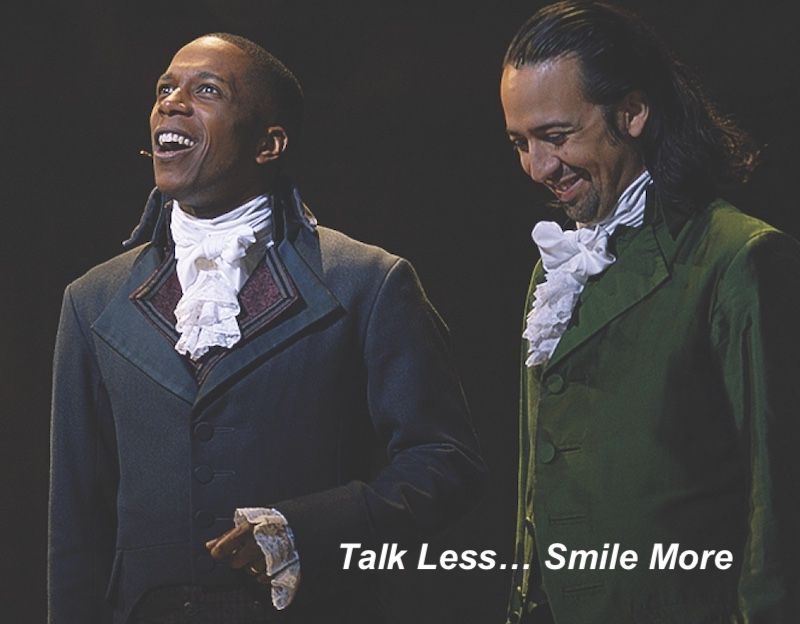
Words and excessive language impede effective discipline, even more so when kids are worked up and emotional. We often become tongue-tied ourselves because we too are worked up.
This phenomenon is exacerbated with very little children. Since they can’t follow simple logic and can’t understand some basic self-preservation concepts like danger, (over)explaining things just confuses the issue. It distracts, especially in moments of crisis when your little one’s ability to listen is likely to shut off. (To explain something in simple, clear terms once is fine – it’s repetitive or exhaustive explanations that are problematic.)
Brevity is king.
On a related note (and to my bitter disappointment), there seems to be a resounding consensus that using sarcastic language with young children is a bad idea. Fantastic. (On the plus side: cutting back on sarcasm, for me at least, is equivalent to cutting back on talking. So that’s progress.)
Besides the basic premise that talking gets in the way of teaching, it also can “threaten your position as the person in charge.” Warning a child about something repeatedly communicates uncertain resolve. Plus, as your children age, this premise continues to hold true, so it’s a great habit to establish early on.
The more we lecture, nag, or remind our children about upcoming tasks, overdue chores, or past mistakes, the less effective we are as teachers. Over-talking isn’t just unhelpful, it’s counter-productive. It works against us on multiple levels.
Parenting experts across the gamut agree: zip it.
So — to recap where we are thus far: step 1: Wait (don’t react immediately). Deep breaths (stay calm). Shhh (don’t talk much). Observe (let things unfold and see what your child does).
Remember: All of this takes extra time. This is yet another reason why we were so insistent in part 1 about the importance of building in extra time when it comes to day-to-day life with kids… if you don’t have at least a few minutes to spare, following this kind of protocol probably won’t be a realistic option.
Here are some examples of these concepts in action:
- Your one-year-old refuses to change her clothes – it might be that she won’t change out of her PJs, put on her coat, or wear her shoes. Instead of forcing the issue, briefly state why she should, and then move on. Don’t make a big deal out of it; say something like, “OK, when you’re ready to change into your clothes, here they are”; or “It’s cold out, you’ll probably want a coat”; or “Your feet might hurt without shoes,” etc. Chances are that in a couple of minutes, she’ll have the brilliant idea to change out of her PJs or put on her coat/shoes/clean shirt on her own, and it won’t be a fight. *If she still refuses, ask yourself, “do I care?” Here is where you let a natural consequence do its job: let her see what it feels like to go outside without a jacket, or walk on the cold/hot sidewalk for a moment. Yes, she’ll be cold, but she’ll live; and chances are, she’ll never do it again.
- Imagine your two-year-old refuses to let you help him with something he is literally incapable of doing on his own, like tying his shoe laces or hooking the dog’s leash onto its collar. Instead of forcing your help on him, just wait. Give him the time to work on it (ideally, you can even step away entirely), and chances are, he might ask for your help in a minute (again, this is where the luxury of having a few minutes is key). If he doesn’t ask for help, then you’ve given him the opportunity to work on a problem independently, and you can then pose your intervention as a “choice” on his part: “OK, would you like to keep working on that for another minute, or are you ready for help now?” The choice is: help right now, or help in one minute? (This is also an ideal place to pepper in some reasonable praise to keep the atmosphere cordial – “I really like how you’re working so hard to change your clothes/get your shoes on/help take care of the dog all by yourself!”)

- Picture this: you’ve just set a lovely dinner on the table, but your three-year-old wants something else to eat. Instead of getting into negotiations for what other food you can offer him (do not try to negotiate with a three-year-old!), try letting him sit with what you made for a little while. If he doesn’t want to eat it, that’s his choice. But when he gets up from the table, dinner’s over. Chances are, he’ll feel hungry… but this experience will likely help make dinner a more pleasant affair in the future. You only have to do this once. This has the added benefit of lining up with pediatric nutritional advice to “control what your children eat, but not how much.” [Read here for more on feeding toddlers, BTW.]
- Whenever you’re explaining a rule to a toddler, resist the urge to explain it to death. Instead of telling your child she needs to hold your hand in the parking lot because “there are lots of cars and sometimes we don’t see all the cars and sometimes cars drive too fast and sometimes cars don’t see children – or the driver is distracted – and you could get hurt or lost,” etc., etc., just tell her: “we always hold hands in the parking lot.” (If you really wanted to elaborate for an older toddler, you could expand to: “we always hold hands in the parking lot so we stay safe.”) Read on for what happens if they don’t hold hands…
- When my son starts bawling about how he wants something he can’t have (papa’s tools, that super sharp kitchen knife, mama’s computer, car keys, whatever), I try not to get bogged down in a detailed conversation about it. This is harder than it looks, because he’s usually desperately returning to the topic (in between his sobs), but I’ve found that not engaging in a conversation, beyond “no, I’m sorry, we don’t play with the sharp-clawed hammer,” generally yields better results than a constant back-and-forth about how and why the hammer is not a toy.
*Note that waiting obviously doesn’t apply to dangerous situations. If your child is doing something dangerous, you should (obviously) intervene immediately.
Waiting is all good and well, but it’s the ideal. Real-life isn’t picture perfect. There are going to be moments where you simply don’t. have. time. It happens. We still love you.
Rushing to get off to school one morning, none of my best efforts to get James out the door were working… and I’d violated the commandment to build in extra time — I didn’t have any. I had to pick him up, bawling and kicking, and carry him out to the car and hold him down in his seat while I buckled him in. It was painful, but we survived. Point being: sometimes, there just isn’t time to do all… this ^^, not to mention do it well. That’s the reality, and it’s OK — the goal is just to minimize those moments.

2. Connect
The next step is to empathize with your child and show kindness. The main goal is to recognize and validate her feelings, even if you don’t agree with them.
Professionals across specialties stress the importance of empathizing with our children, even — perhaps especially — when they’re at their worst (or we at ours). We need to really hear what our children are saying.
Connecting with our children, verbally and non-verbally, is essential. Even when we are furious, or delivering consequences that make our children livid, we can still be understanding of their plight, whatever it may be.
Acknowledging our children’s experiences gives them validation and respect, without letting them off the hook. Even more, sometimes it literally solves the problem on its own.
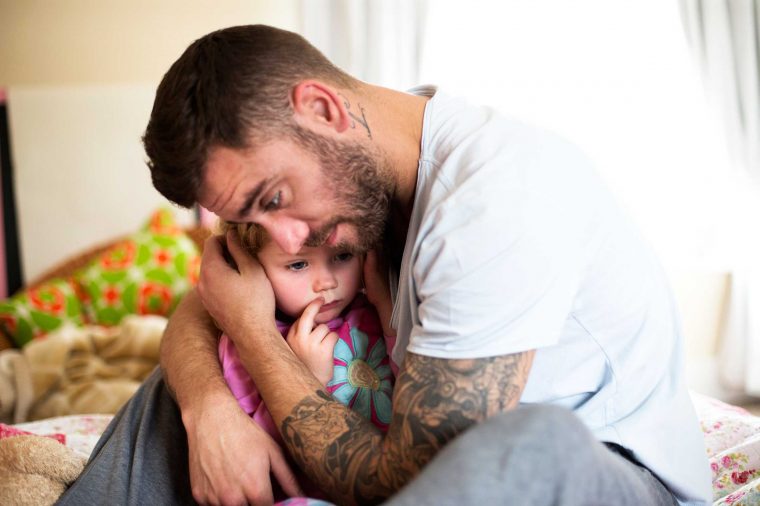
On the flip side, disregarding their feelings (however irrational or frustrating) — or giving them the cold shoulder — communicates disrespect.
If this kind of thing doesn’t come easily, here are a few tricks to try out:
- Ask yourself about your child’s behavior. (e.g., why is he upset that I cut his sandwich diagonally?) Be curious. Experts recommend thinking about why your child did something, and whether it made sense (for their age/time of day/the situation/etc), to help connect with the child.
- *If your kiddo is at least 3, you can start to ask some questions (remember, though, brevity is king — don’t get too carried away). The goal is to ask something that prompts your child to think about the situation, and then help guide her toward coming up with a solution rather than simply doing it for her. What is making you so upset right now? What do you think we should do? What are you going to try?
- Stoop down to get at your child’s eye level.
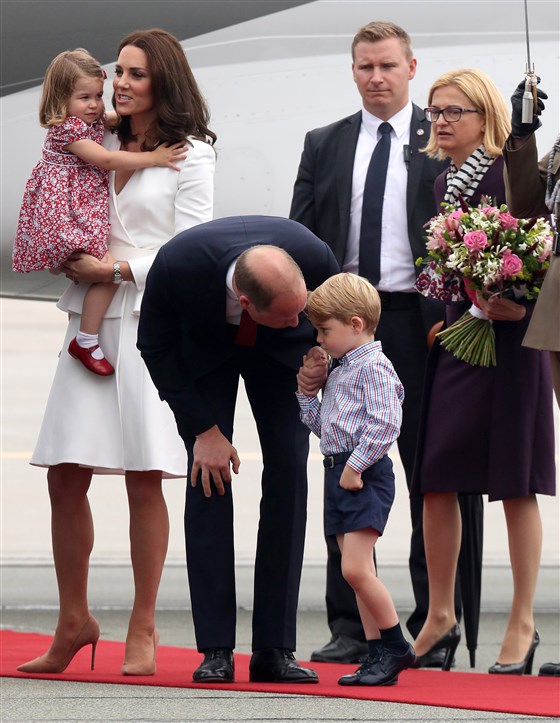
- Repeat back to your child what you are getting from them using simple, straightforward language (i.e., “I see how upset you are that we have to leave the playground” or “I know how tough it can be to share”). And remember that you can always use the same line – keep it simple so you can easily show empathy in any situation. Love and Logic suggests: “This is so sad” or “Ohhh, this is hard.”
- Share in your child’s feelings using simple wording. For example: “I wish we could have more ice cream, too! Too bad it would hurt our tummies,” or “I wish we had more time to stay awake and snuggle! But we can do this more tomorrow.” When having difficulty waking them in the morning, I like to say, “I knowwww, I hate getting up early too!” It lets them know that you’re all on the same team.
- **Use physical connection — a simple hug is a powerful strategy. Hugs are soothing (for both of you), demonstrate love and understanding, and often help dissolve tantrums before they really take off. Seriously, friends. It’s science.

Making meaningful connections and showing empathy will help make children feel involved in the process, and also communicates respect… and children who feel connected and respected are more likely to go along with things and be cooperative. They’re also more likely to help resolve problems that arise instead of furthering them.
So try your best to be earnest in all this. It might be difficult, but even for those times when you’re laughing inside (“I know you’re upset because I cut your sandwich the wrong way”), try not to mock or make fun.
Furthermore, try not to correct your child’s responses or feelings. Think about it… how would you feel to be told, “No, you’re not really cold/hot/angry/hungry/sad/making sense?” If someone has the audacity to tell me I’m overreacting or that whatever I’m feeling is somehow “wrong,” I can tell you that my immediate response isn’t going to be “good point! I totally see things from your point of view.” And neither will your child.
For young children of all ages, simply acknowledging their feelings — using empathetic words and/or a hug — often “does the trick.” Crisis averted.
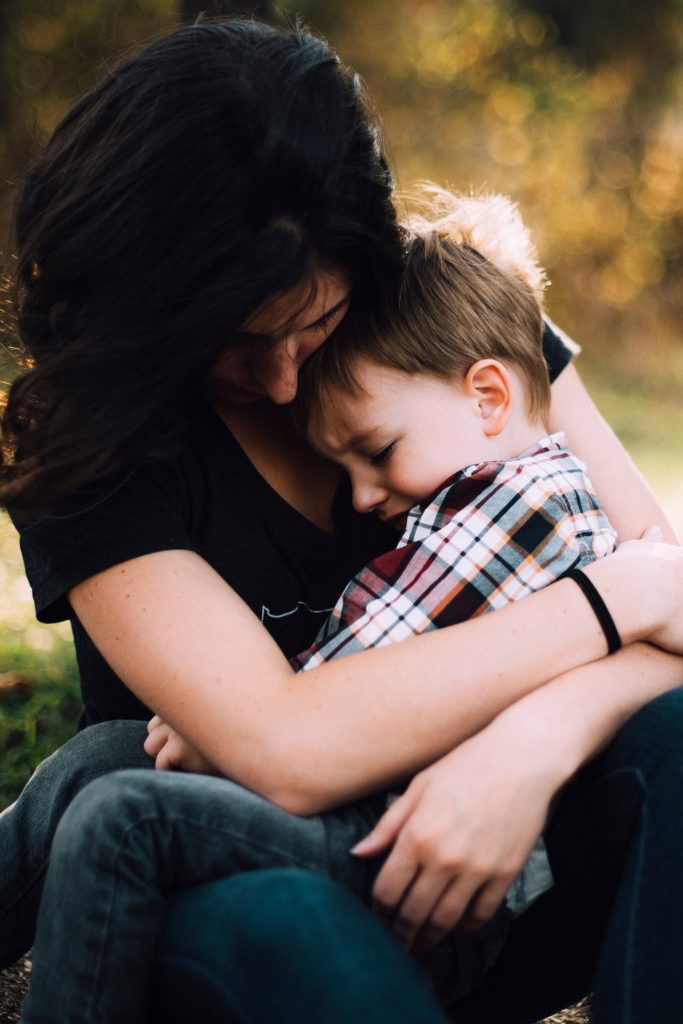
For example:
Imagine your kiddo is pestering you to let her do something she’s not allowed to do, such as have a snack right before dinner, play with the gas fireplace remote control, or give table food to the dog. Considering why she wants this can sometimes help you find an alternative that fits the bill, or else adjust your environment. If your child is whining for goldfish shortly before dinner, maybe you could offer her a few with dinner, when the time comes, for example. Perhaps some other gadget with buttons will suffice instead of the fireplace remote. Perhaps putting the dog away during mealtimes prevents the temptation of feeding the dog in the first place (or maybe she’s happy to give the dog an actual dog treat rather than her own dinner).
If your child is at least 3, you can ask them those questions and try to prompt some preliminary problem-solving. Why do you want to do X? What else do you think we could do about that? (In the heat of the moment, kids can struggle through tears to put words together — in this case, it can also help to model deep breathing and calmly say, “it’s OK, use your words.”) If she seems stumped, you could even offer to share ideas with her. E.g.: Would you like to hear some ideas? Would you like some help thinking about this?
An almost-daily occurrence in my household is this: my son becomes distraught over something that strikes me as ridiculous (his milk is the wrong temperature, he needs to wear two more shirts, we ran out of cheese 5 days ago, his sister is napping and he wants to play with her NOW, etc.). Very often (seriously — it’s shocking), keeping calm and identifying with his struggle actually makes a huge difference. Usually one of a few things happens:
- 1. I am able to “fix” the situation easily (heat up his milk, get him another 2 shirts (who cares?), etc.). Problem solved.
Often, I even come to realize that his complaints are more valid than I thought (tags on his clothes that are bugging him, the sun is in his eyes, he burned his tongue on something, etc…. Shoot, if someone served me white wine that was the wrong temperature, I’d be pretty annoyed too!).
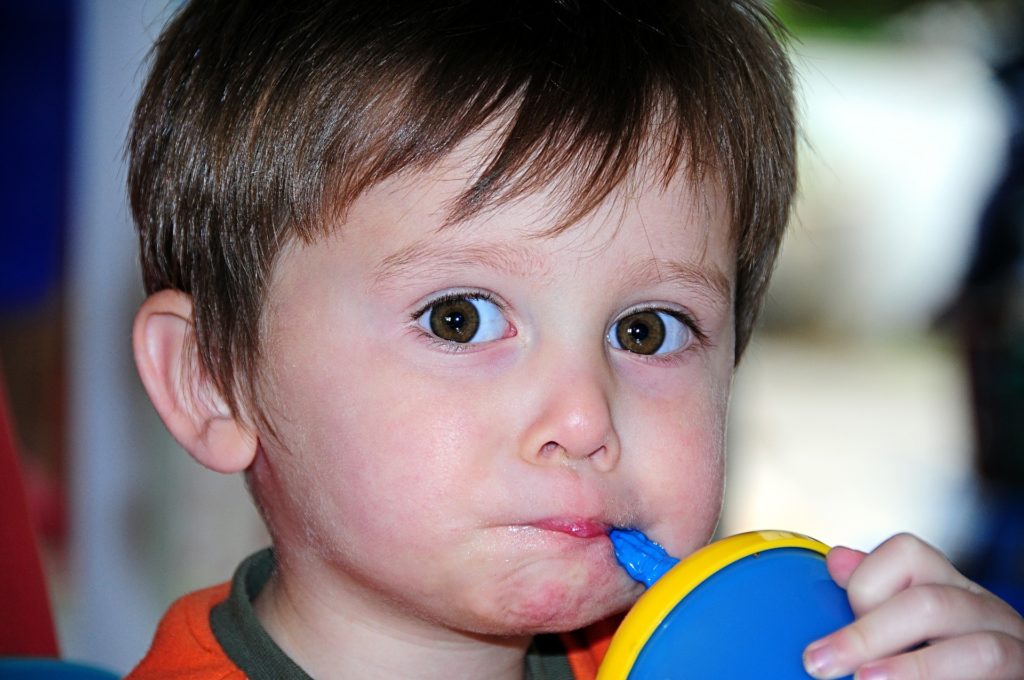
First — you don’t always have to “fix” the situation. Indeed, there may be (many) moments when you easily could and you choose not to. Making this decision comes back to picking and choosing your battles. For example, if my son asked me to make him a quesadilla for lunch, and I’m just ready to serve it to him, but then he changes his mind and tells me he now wants to have the leftover tofu he sees in the fridge instead, I’m not going to totally swap out a different meal, even if I technically could. He asked for a quesadilla, that’s what I made him. I’m not going to stuff the quesadilla in the fridge and pull out the tofu because I want him to learn that if we decide on a meal together, that’s the plan. On the other hand, if he wants me to add something (even something weird) to his quesadilla, I’m happy to hear him out. This brings me to my second point…
These kinds of moments offer a great opportunity for us to help teach our kids how to ask for things politely. Continuing with the example above, I’d be inclined to let my son have some leftover tofu with his quesadilla if he asked kindly and politely. If he’s whining and crying about it… just… no. I’ll often give him “one more chance” to ask nicely, with a prompt like, “what’s a better way to ask me for that?”
Thus — remember that just because you can fix a situation doesn’t mean that you necessarily should, and when you do, see if you can’t double down and work on some manners!
- 2. I am not able to “fix” the situation easily but can offer some comment that totally dissipates the situation (this is part luck, folks), such as “I’m sorry your sister is sleeping right now and I know you really want to play with her — do you want to go with me to get her when she wakes up?” or “I can’t believe we don’t have any cheese! That’s crazy! Do you want me to get some next time I go to the store?” *Sometimes, merely asking your child about why he wants to do something or why he’s upset diffuses things on its own. These are magical moments indeed.
- 3. I am not able to “fix” the situation or ward off the impending meltdown through some combination of ninja moves from above. In this case, it’s time to move on…
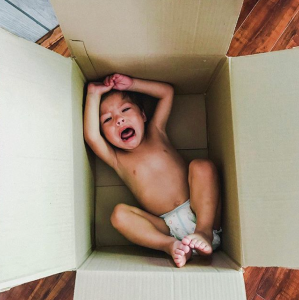
Another cool thing about this strategy — connecting — is that it can help you refine your own ideas about where to set your firm boundaries or which battles you want to “pick.” For me, sometimes forcing myself to recognize my son’s feelings has actually forced me to see a valid point.
Once, my kiddo was asking me (over and over and over and over again, which was driving me crazy to begin with) to climb up and sit on a bar stool. I refused, because that was the rule we’d decided on (he’d fallen off when he was younger… oops). But as he kept asking me and growing increasingly upset, I forced myself to stop, calm down, and empathize with him.
I asked him about it, and in the process, I realized that he was now (probably) old enough to climb up on the stool on his own… and all he wanted was to see what I was doing in the kitchen to make dinner. So I ended up saying, “you know what, that’s OK with me, as long as you ask first.”
At this point, if things are still not going well, you must make a choice. You can either try to redirect your child, or you can opt to implement a consequence. Some professionals don’t like consequences and always talk about redirection, but this doesn’t work ALL the time… plus constantly redirecting is EXHAUSTING. No one can do it all day long every day, so do what works for you.
The concept behind both redirecting and implementing a consequence is to interrupt the problem behavior, which leads us to…
3. Redirection
Reorient your child away from the problem and redirect her attention and interest toward something else.
Reminder: redirection is intended for children < 5 (namely, toddlers and preschoolers), not older school-aged children. It’s designed to interrupt the behavior, give everyone some space and time to regain (or maintain) composure, convey limits, rules, or boundaries, and also teach that doing X will not yield their desired result.
When I brought my 20-month-old on a preschool tour over the summer, he started grabbing paper towels by the fistful and throwing them all over the place. My instinct was to start desperately trying to pry him away from the paper towel dispenser, to no avail. The preschool director, however, didn’t bat an eye. She patiently plucked a couple of paper towels off the floor, put one over her face, and “puffed” it into the air, asking James to watch it float to the ground. She did this a few times, during which she stealthily emptied the towel dispenser; James was too giggly and engrossed in trying to puff paper towels around to cause any more destruction. Brilliant!
This is when I realized that redirection is a creative skill. It’s not synonymous with distraction: “LOOK! — a squirrel!” If you want to have any success with redirection, be imaginative. Be resourceful. Think of redirection as an ability to be cultivated.
This doesn’t necessarily mean you need to be a professional. Sometimes (as mentioned) even a simple question can turn a child’s attention away from something upsetting.
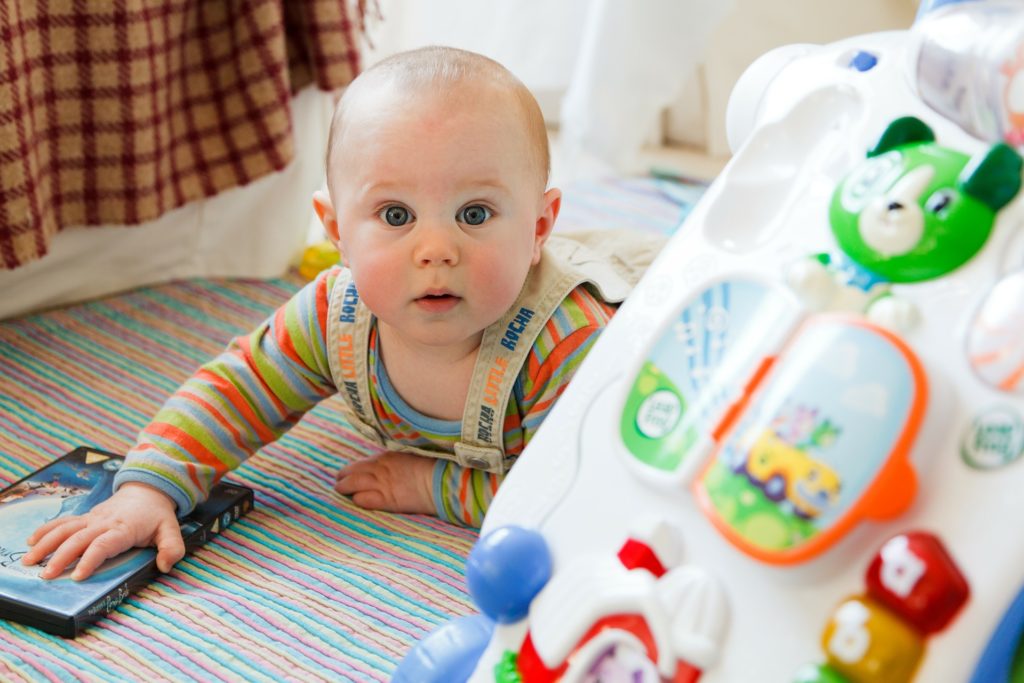
For example:
- The next time your child continues to resist getting into his car seat, try asking him a related question about the trip, such as, “What do you want to get at the grocery store?” or “Do you think we should bring one of your books with us?” or “What’s that on your shirt?” This is why doctors ask you what your plans are for the summer when they are coming in to give you a shot (or do something else unpleasant).
- Imagine your little one is getting very frustrated as the tower he is trying to build with his blocks keeps falling. You could try to suggest building something different. “Should we try to build a park or a zoo instead?”
- If your tot is starting to throw rocks at the playground, say something like, “someone could get hurt. Would you like to come throw this ball with me instead?” Or “instead of throwing these rocks, let’s make a rock tower together!”
*It’s almost always worth it to try to redirect first, but it can be tiresome and challenging. Even those redirection wizards among us can’t do it all the time, and in those instances, or when it fails, you can choose to:
4. Implement a Consequence
The most effective “consequences” involve changing locations.
Practically speaking, you have the option to change:
- your location (walk away from your child; go into another room, for example)
- the problem/object’s location (remove the contentious item), or
- your child’s location (move your child to a separate space).
For those of you reading closely, YES, this last option (change your child’s location) is (sort of) equivalent to a time-out. If you don’t like time-outs, you can call it quiet time or recovery time or even a “time-in.” Or you don’t have to do (call?) it at all. One of the main purposes of a time-out (or whatever you want to label it) is to interrupt the misbehavior, then allow time for your child to regain his composure (and maybe even for you to regain yours!).

Here’s the step-by-step:
1. Develop and exclaim some sort of time-out cue. EVERYONE recommends this. The cue itself doesn’t matter – it can be whatever suits you, you just need something consistent that indicates a consequence is happening right now. And it’s not up for negotiation.
- “Uh-oh! Time for a little quiet time.”
- “Bummer. Looks like you need some time out.”
- “1, 2, 3 – OK. Time-out time.” (You can also use counting to function as warnings, if that suits you, as in — “that’s 1” at the first infraction, “that’s 2” at the second, and “that’s 3 — time out” at the third.) See also: 1-2-3 Magic.
2. Move your child to a designated time-out space, such as her bedroom, until she calms down.
Though some pediatricians suggest that a time-out might last as many minutes as your child’s age (i.e., one minute for one-year-olds, two minutes for two-year-olds, and three minutes for three-year-olds), this is an arbitrary rule with no true basis. Love & Logic emphasizes that a time-out should last “as long as it takes” — whenever your child has calmed down and regained their composure, that’s when the time-out’s over, whether it took 30 seconds or 30 minutes.
You can wait outside.
You can, some experts say, lock the child in if need be (yes, you can. It’s ok!).
After the time-out — and this is super important — resume life as normal… like nothing ever happened (more on this below). You don’t have to revisit it.
If you decide to use time-outs, here are some important things to keep in mind:
- Try to implement a consequence immediately. This way, your child will be able to connect that the time-out is because she chose to do X. (Although with older children who are at least 3, there might be certain times when you want to say something like, “I’m very angry and need a few minutes to think about this” — that’s totally OK. Always better to stay calm.)
- Don’t think time-outs need to be boring — the whole point isn’t to deliver a punishment, it’s to interrupt the problem.
- That said, don’t allow for any kind of desirable activities during time-outs, like screen time/technology, nursing, or friends. It doesn’t need to be boring, but time-out should not include anything special, otherwise it doesn’t deter anything.
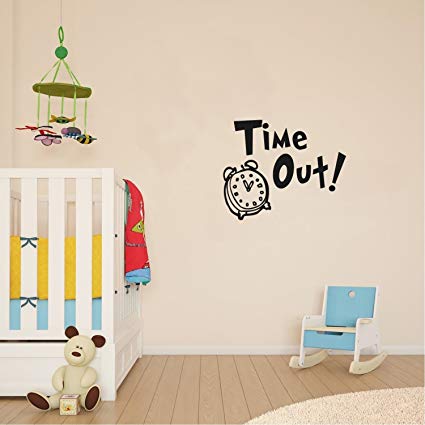
*The best time-out environment would be “neutral,” in theory, but the basic principles are that it should be neither punitive/punishing nor rewarding.
*Note: One advantage of following this “time-out formula” is that it turns a time-out into a choice: a child can either choose to behave appropriately or choose a time-out. Simple as that. Hence, enforcing a time-out is not delivering a “punishment,” but rather allowing the consequence for whatever behavior just occurred. And you can remind your child of this, too: “What a bummer. You know that when you choose to [insert problem behavior] you’re also choosing to take a time-out. That’s sad.” (Remember, though, don’t overtalk!)
Here are some scenarios illustrating how to IMPLEMENT A CONSEQUENCE for a one-, two-, and three-year-old:
ONE-YEAR-OLDS: Parents tell us that one-year-olds are starting to experiment with defiance and blatantly do things they shouldn’t while their parents are watching. For example, one of Marissa’s one-year-old twins knew she wasn’t supposed to stand on the couch, yet still did it… repeatedly. Marissa would say, “Uh-oh! Please sit down!,” and yet her daughter would look at Marissa, smile, and continue standing on the couch. Finally, whenever this happened, Marissa learned to calmly say, “Uh-oh, I guess you need to go upstairs for a little bit,” and then she would bring her daughter up to her room for a few minutes. After several times (as in days) of consistently doing this, the behavior stopped.
TWO-YEAR-OLDS: Many readers tell us that biting is a big problem with two-year-olds (they’re just the cutest, aren’t they?). Here are some ideas for how to respond to this issue:
First, connect: “I know you are upset. The rule is: No biting. We always use gentle touches.”
Then, change your location or implement a consequence. The idea here, remember, is to institute a change of location. Thus, you can either remove yourself from the biter (even close yourself in the bathroom, if need be), or you can state your time-out cue and issue a time-out. You might say, “That’s too bad. Anyone who bites needs some quiet time,” and then place your child in some designated time-out space until he’s calmed down. The next time he bites (you or anyone else), the same thing happens. Even though it’s maddening, remember not to get upset! This will only fuel the fire.
A note on “NO”: experts tend to favor framing things in the affirmative (i.e., “please walk with me,” rather than “no running”) for everyday/minor infractions. This is in part to draw kids’ attention to what they can do rather than what’s off limits, and also in part because we (all of us) tend to respond better to positive requests. Another reason for this has to do with recall purposes: if we tell our kids “don’t/no jumping on the bed,” they likely hear and remember “jumping on the bed.” But if we tell them “we sit on the bed” or “beds are for sleeping,” they’re more likely to hear and remember the desired behavior.
*That’s not to say that you should never use the word NO — just that it’s most effective when you reserve it for when it really, really matters. For example, for aggressive behaviors like biting, hitting, hair-pulling, etc., saying NO firmly and seriously can be a powerful tool and an important way to communicate acceptable behavior and boundaries for your child. When my kids make a serious transgression, whether it’s a push, a truly rude or hurtful comment, or something dangerous, I always respond: “NO,” tell them what they should do (“we use kind words,” “we use gentle touches,” “we sit still with our toothbrush,” etc.), and then make a decision about a time-out.
In short: don’t overuse your no’s (get it?); spend them wisely.

THREE-YEAR-OLDS: Last week, my three-year-old became “upset” when I asked him to put down a Sharpie he found on the counter. It was the end of the day and he was tired, so he didn’t exactly meet my outrageous request kindly. (Little kids are defiant, aren’t they?) When my initial attempts to empathize with him and redirect him (“I’m sorry you can’t play with that marker, but I have a different coloring marker you can use if you want it!”) failed miserably, he threw the sharpie in my face. When I said, “Bummer! That’s time-out. The rule is: we don’t throw things at people,” he protested and said “Okay, I’ll listen! I’ll listen now!” He was upset about going to his room, but he calmed down quickly (I could hear him singing Jingle Bells on the monitor!) and when I went to get him he just said: “Hi, Mama! Let’s go play!” And off we went.
We’re still working on (him) not grabbing things off the counter, but I’m also working on keeping it clear of off-limits items.

This also raises another important point: sometimes following through with this whole course of events teaches us that we might need to backtrack, so to speak. If you’re having recurrent issues with the same problem and nothing you’re doing is working to stop it, you might want to take a step back and try to see the forest through the trees. If you’re feeling frustrated with your child’s behavior, you may need to try some different preventative methods rather than focusing on how to stop your child’s behavior after it occurs.
Of course, some things aren’t amenable to earlier limits, but others are. If your child is throwing things, those items can be removed. If he’s climbing on top of things, furniture can (sometimes) be rearranged to prevent him from being able to do so.
As important as responding to misbehavior is, the reality is that we’d all be better off focusing much more of our energy on preventing issues as much as possible. And doing this is HARD WORK. It’s tiresome. It’s straining. It’s annoying. It’s time-consuming. But all the research points to it as our best bet.
Tons of readers report that their toddlers frequently run away from them in public. One way to deal with this is to set a hand-holding rule. In theory, you would then implement a consequence the second that rule is broken, every single time. But sometimes this just isn’t realistic (you’re schlepping bags full of groceries or a second child or a week’s worth of diapers under your arm and can’t go running around the parking lot, for example).
Thus, perhaps this might be an instance where you could start to step back from the problem behavior from “running away” to “not holding hands.” The farther “upstream” you go, the easier it might be to implement a consequence (or implement one the next time).
For example, you could explain to your child that from now on, you always need to hold hands when you’re out of the house. You could present the “consequence” — getting carried, getting put in a carrier, riding in a stroller, etc. (remember, anything that changes your child’s location) — as their own choice. You can say, “If you don’t want to hold hands, that’s ok, but you’ll need to go in the stroller.”
If your child refuses to hold hands from the get-go, she can ride in the stroller straight away. If she starts out holding hands and then breaks away, you will hopefully be close enough to scoop her up and place her in the stroller immediately; and she should start in the stroller the next time you go out. She chose to go in there.
To be fully effective, this pattern would need to be used, without fail, whenever you are walking with your child.

5. Afterward… Move On
A few more words about what to do after a time-out. In short: keep your forward momentum and don’t hold a grudge.
After your child misbehaves, and you’ve gone through all the steps (connect, change location, etc.), it’s important to just move on.
In other words: DON’T DWELL ON IT.
Don’t lecture your child, nag her, or remind her about how she broke the rules (no matter how much you want to!). Don’t be emotional or short or snappy. None of these things will help you.
And even though you may be entirely frustrated with your child, don’t withhold your love and affection. After a misbehavior, kids might feel out of control or fear you don’t love them anymore; they may need to be reminded that you are always there to implement boundaries to keep them safe, and that you love them unconditionally, no matter what.
This is one place where we can actually take a lesson from our kids — children tend to be in pretty good spirits after a consequence (once they’ve calmed down), and are so forgiving, it often puts us in check. I’m frequently dumbstruck by how quickly my son cheers up after we’ve had an “altercation.”
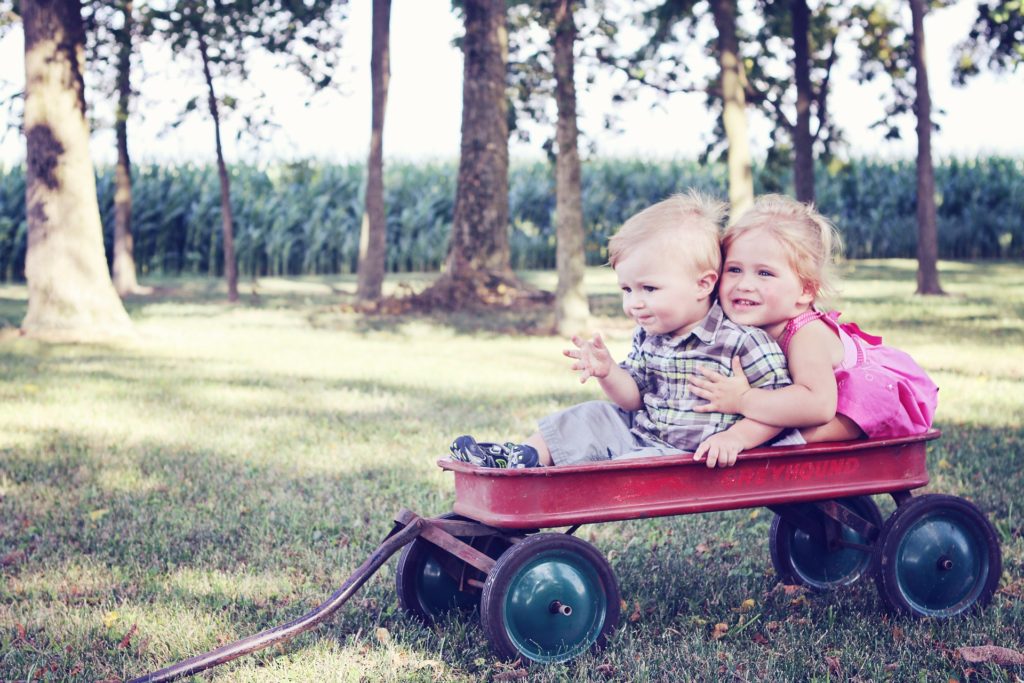
You’ll also want to revert to your prevention strategies: stay calm and be understanding, model desirable behavior, fall back on the patterns your child is used to, etc.
Hopefully you find some relief with some of these strategies — we know we have, but we’re far from perfect. Every day is different.
Just a few final notes (we’re almost done — promise)…
- This parenting gig is tough sh*t! Don’t beat yourself up if you “fall off the wagon” and lose your temper, talk too much, or whatever. You’ll definitely have another chance to show off your discipline skills — trust me.
- If you’re struggling with “the protocol” — wait, connect, redirect, implement a consequence — just try to make as many decisions as you can ahead of time. Seriously: having a plan of action is half the battle. This is true of all kinds of habits and decisions in our own lives, and it’s true when we’re making them as parents as well. When you plan ahead, you relieve yourself in the heat of the moment: the course of action is already charted. Planning will save you.
- Play the long game — discipline is precisely no one’s favorite part of parenting little children. But we really think all our commitments to teaching our young children how they can behave well, safely, and kindly, are setting the stage for the years ahead. Just like saying no to that donut, you will thank yourself tomorrow.
Toddlerhood can be a very frustrating time for parents. It’s chock-full of misbehaviors, meltdowns, and mania. But it’s also filled to the brim with cuddles, kisses, oh-so-much love, and amazing leaps in learning. So do your best to take it all in stride and try to enjoy the happy, positive moments when they occur.
In the meantime, take it from us — you’re doing an awesome job raising your little one(s)! Keep up the great work and go easy on yourself: this is challenging for everyone!
this is so so so helpful!
This article is a life saver for all the parents. Awesome writting skills on this topic.
Hi! I’ve only just stumbled across your page and have really enjoyed the articles I’ve read so far! I especially love how much you emphasize preventing the misbehavior in the first place. It’s our job as parents to set our kids up for success!
I wanted to point out a new(ish) perspective of time-outs and how they can have unintended negative effects on emotional regulation development. The gist of it is essentially, by sending a child away to experience emotions that their body is too underdeveloped to control or certainly to understand, we actually create a sense of shame around that emotion. The child learns subconsciously that anger equals isolation therefore, for the sake of self preservation, he must supress that anger to be accepted in his famipy unit. Supression is not a healthy coping mechanism and does facilitate the development of healthy emotional regulation. In fact, anger plays a very important role in how we perceive threats, and we can unintentionally do our children a disservice by forcing them to “shut the anger off” instead of teaching them how to properly regulate it.
Alternatively, “time ins” have garnered a lot of hype lately and focus on the caretaker being present through the big feelings in an effort to co-regulate with the child. In this way the child does not feel isolated, feels that it is ok to experience anger (or what have you), they are confident that their care takers love is NOT conditional based on their behavior, and they learn healthy, effective coping strategies through modeled behavior (deep breaths, grounding exercises, quiet time, screaming into a pillow or squeezing a stuffy really tight to release some of the pent up physical energy, etc).
Now of course, in the heat of the moment, it isn’t always so easy to remain regulated yourself as the parent!! But I think having this info in your back pocket and working towards this as a consistent response to defiant and inappropriate behavior, as opposed to a time out, could lead to a much happier parent/child relationship overall. I hope this is helpful in some way!
Thank you so much for the advice! I’ve been feeling lost and overwhelmed since having my now 3 year old. A lot of modern and gentle parenting advice just doesn’t seem practical or acknolwedge how imposibble the task can be for the primary caregiver every day (for example redirection).
Well writen and funny with practical solutions!